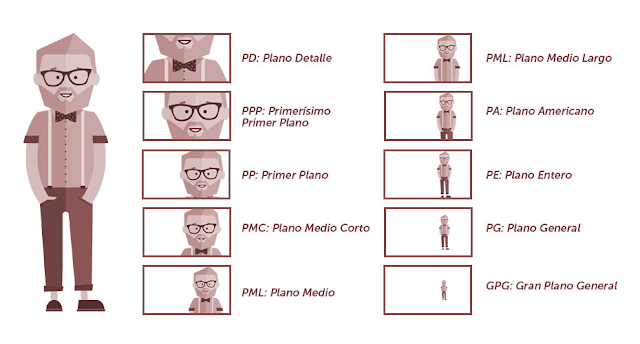
Shot
types refer to the various ways in which a scene or subject can be framed
through the camera. The choice of shot type has a significant impact on the
visual storytelling and emotional tone of a film. Here are some common shot
types:
1. Extreme
Long Shot (ELS) or Establishing Shot:

·
This shot captures an expansive view of
the location, setting, or landscape. It is often used to establish the context
of a scene or provide an overview.
2. Long
Shot (LS) or Wide Shot (WS):

·
This shot shows the subject or characters
from head to toe within their surroundings. It provides a broader view than a
medium shot but still includes enough context to maintain spatial awareness.
3. Medium
Long Shot (MLS) or Three-Quarter Shot:

·
This shot frames the subject from the
knees or waist up, offering a view that is closer than a long shot but not as
detailed as a medium shot.
4. Medium
Shot (MS):

·
This shot frames the subject from the
waist up. It's commonly used for conversations or actions that require more
detail than a long shot but don't need a close-up.
5. Medium
Close-Up (MCU):

·
This shot frames the subject from the
chest or shoulders up, emphasizing facial expressions and reactions. It's often
used for individual character moments.
6. Close-Up
(CU):

·
This shot tightly frames the subject's
face or a specific detail. Close-ups are powerful for conveying emotions,
reactions, or emphasizing important visual information.
7. Extreme
Close-Up (ECU):

·
This shot zooms in even further,
focusing on a small detail or a specific part of the subject, such as the eyes
or mouth. Extreme close-ups create intensity and emphasize minute details.
8. Over-the-Shoulder
Shot (OTS):

·
This shot is taken from behind one
character's shoulder, showing the back of their head and part of their
shoulder, while focusing on the character or object in front of them. It's
often used in dialogue scenes.
9. Two-Shot:

·
A shot that frames two characters within
the same frame. It's commonly used for interactions between two people.
10.Point-of-View
Shot (POV):

·
This shot shows the scene from the
perspective of a character, providing the audience with a glimpse of what the
character is seeing.
11.High
Angle Shot:

·
The camera is positioned above the
subject, looking down. This shot can make the subject appear smaller or weaker
and is often used to evoke a sense of vulnerability.
12.Low
Angle Shot:

·
The camera is positioned below the
subject, looking up. This shot can make the subject appear larger or more
imposing, emphasizing power or dominance.
13.Dutch
Angle or Dutch Tilt:

· The camera is tilted on its side, creating a diagonal horizon. This shot is often used to evoke tension, disorientation, or a sense of unease.



